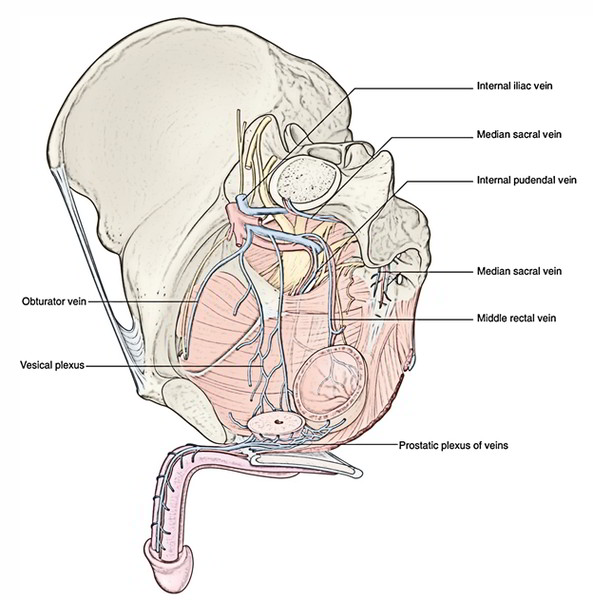The Internal iliac vein arises deep from the deep pelvic region. It emerges near the greater sciatic foramen. The internal iliac vein receives number of tributaries from different veins that drain in the pelvic region, it is resposnsible for most of the pelvic venous drainage.
Origin
The internal iliac vein begins in the upper region of the greater sciatic foramen, which is a large aperture on each portion of the sacrum in the bone of the pelvis. It arrives at the pelvis after proceeding posterior towards the internal iliac artery. From there it connects with the external iliac vein, and they emerge as the common iliac vein together.
Insertion
Later on this vein will move within the inferior vena cava, which is the biggest vein in the body. These veins drain blood out of the reproductive, urinary, as well as digestive organs. Along with its branches the internal iliac vein belongs to numerous venous plexuses. These consist of the rectal, vesical, prostatic (in males), vaginal (in women), and uterine (in women) venous plexuses. In a male, this vein will be located in the region of the prostate gland. In a woman, it is located in the uterine and vaginal locations.
Structure
Numerous veins which follow the branches of the internal iliac artery converge to create each internal iliac vein, except the iliolumbar veins which terminate within the common iliac veins. The vein starts close to the upper part of the greater sciatic foramen. It ends by connecting the external iliac vein to create the common iliac vein. The pelvic organs are drained by a variety of venous plexuses that eventually drain within the internal iliac vein. These plexuses encompass the urinary bladder (vesical plexus), the prostate, the uterus, the vagina and the rectum.
Attachments
The rectal venous plexus includes two parts, internal and external. The internal plexus is located in the submucosa, although the external plexus is located outside the muscular coat (Therefore the two plexuses are divided by the muscle coat). The internal plexus drains within the superior rectal vein primarily. The external plexus is emptied by the superior, middle and inferior rectal veins, (which are continued into the inferior mesenteric vein), the middle rectal vein (which is a tributary of the internal iliac) as well as the inferior rectal vein (which is a tributary of the internal pudendal vein). The portal and systemic blood circulations interact via the rectal venous plexuses. The internal rectal plexus has a series of dilatations that are positioned directly over the anal orifice. These often get enlarged to create piles.


 (54 votes, average: 4.60 out of 5)
(54 votes, average: 4.60 out of 5)